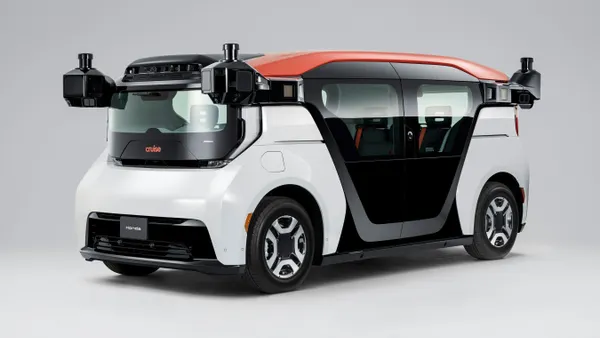This is the second part of a two-part series examining the state of AV technology and its impact on U.S. cities. Part 1 looks at how the auto industry is reassessing autonomous vehicles, creating uncertainty for city leaders.
For many, the allure of autonomous vehicles is the belief they will be safer than human drivers.
According to Waymo, which is owned by Google’s parent company, Alphabet, “Autonomous driving technology has the potential to dramatically improve road safety and save millions of lives now lost to traffic crashes.” And the National Highway Traffic Safety Administration states, “Vehicle safety promises to be one of automation's biggest benefits.”
This would be an important development for cities, which have struggled to reduce traffic fatalities in recent years. Nearly 43,000 people died in traffic collisions in 2021, a 10.5% increase over the prior year. In the same year, pedestrian deaths jumped 13%, and bicyclist fatalities rose 5%.
Autonomous vehicles don’t get distracted or fatigued and don’t drive under the influence. But if AVs are to be that much safer than human drivers, they need to respond to potential roadway conflicts faster than a person can. According to a 2019 Massachusetts Institute of Technology study, humans need up to 0.6 seconds to see and react to road hazards. Younger drivers detect hazards nearly twice as fast as older drivers, the study found.
In a 2021 Waymo study using simulations based on roadways in Chandler, Arizona, the company’s AV technology prevented 32 of 36 potentially avoidable collisions — a nearly 90% success rate. Moreover, the simulations saw the AV respond proactively to potential collisions and prevent those “without making any urgent evasive maneuvers,” the study said.
Alexander Wyglinski, professor of electrical and computer engineering at Worcester Polytechnic Institute and a senior member of the Institute of Electrical and Electronics Engineers, explained that AVs generate a great deal of information from cameras, radar and lidar sensors. That information has to be processed, and the vehicle must decide what to do with the data before taking action. “But now there's a problem: too much information,” he said.
The challenge is to process all that information “without a big supercomputer in your car,” said Alberto Broggi, the founder of VisLab, now owned by chip-maker Ambarella. The inputs must be processed in real-time; even a short delay could cause an accident. “You need to go so fast in the processing that the vehicle understands there is an obstacle in front of you and can react pretty fast,” he said. “We're going in the order of milliseconds.”
Ambarella is developing what’s known as a “system-on-chip” that uses artificial intelligence and neural network computation. The semiconductor processes the data from all the sensors, decides what action to take and controls the vehicle’s response. “So everything is done on that chip,” Broggi said.
But detecting objects is just one part of the equation, Broggi explained. The more difficult problem is enabling AVs to understand what another vehicle, pedestrian or other road user will do in the next few seconds, he said. That’s the next step, Broggi added. “We’re pretty close to that.”
Wyglinski argues for an added component: vehicles communicating with each other. “That information exchange could be mission-critical,” he said. “If you know the intentions of other vehicles around you … that really is the game-changer.”
Within the next five years, Wyglinski believes the industry will achieve the combination of advanced AI chips and vehicle-to-vehicle communication. With 5G networks now widely available in the U.S. and more cars equipped with 5G, “Everything kind of aligned,” he said.
Transportation Secretary Pete Buttigieg told Quartz that “it would be hard to do worse than human drivers when it comes to what we could get to theoretically with the right kind of safe autonomous driving.”
If these emerging technologies allow AVs to be widely adopted, cities could see benefits beyond added safety.
AVs could also provide transportation access to people in underserved communities, according to a report issued this year by the Chamber of Progress, a tech industry coalition. Vehicle ownership is lower in such communities, and rising housing costs are pricing people out of transit-oriented development, the report stated, leaving many people with few transportation options. Self-driving cars could also improve mobility for older adults and those with disabilities that prevent them from driving.
And if these developments prove out, cities may be in for a revolution. “In the next few years, we will be autonomous, and city leaders will be comfortable enough to disallow [human-operated] vehicles to drive because it's too dangerous,” Broggi said.











